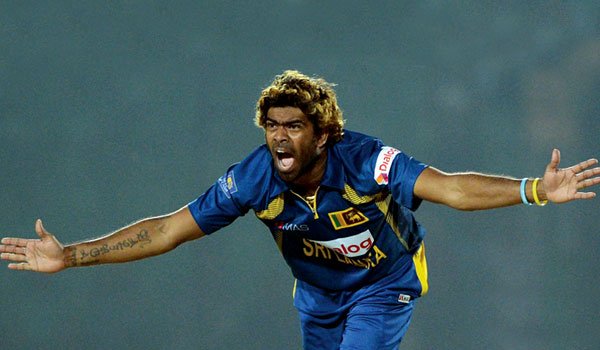With T20’s popularity continuing to flourish, cricket – particularly in the shorter formats – has become a game where bat increasingly plunders ball. A fusion of more innovative batting, thicker bats, shorter boundaries and blander pitches have combined to provide major advantages to those wielding willow.
In today’s reincarnated cricket, Rohit Sharma, and most likely several others, can score 264 in a single ODI innings. It doesn’t feel long ago that 264 in an ODI was a near match-winning total. A score of 364 doesn’t even seem impregnable, particularly when a player like AB de Villiers can smash 16 sixes in the span of 44 deliveries.
Watching a recent ODI between England and India at the WACA in Perth, where England battled to reach the 201 target on an up-and-down wicket, felt archaic. Low-scoring matches on difficult pitches have become a relic amid a shift towards a sleeker product. Crowds relish the excitement of the big hitting, and no doubt, the administrators spruik it with revenue dangling in their sights.
The past two ODI World Cups played in India and the West Indies were played on flat, albeit slower, pitches. Heavy scores ensued. The World Cup in Australia and New Zealand is likely to again produce hefty totals for reasons mentioned above. Plus New Zealand’s grounds are, in the main, as big as a postage stamp and wickets in Australia have gravitated towards the more mundane.
Still, pace bowling looms as an important weapon and is likely to separate the genuine contenders from the pretenders. New Zealand’s wickets are seam friendly, while bounce can be conjured from Australian pitches. Australia, South Africa and New Zealand are the consensus favourites, in large part because each of them possesses a bevy of quality pacemen.
Conversely, the teams from the sub-continent are not forecasted to figure in the latter stages of the event due essentially to possessing two major flaws – not having a potent pace arsenal, and their batsmen seemingly unable to cope with bounce, and seam movement, amid juicer wickets. These two problems were highly noticeable for India during their inept Tri-Series campaign against Australia and England. Ditto for Sri Lanka in New Zealand.
But former English paceman Alan Mullally believes the sub-continent teams can figure deep into the tournament if their bowlers “focus on the basics”. While his international career was somewhat brief, Mullally’s most noticeable contribution was an impressive World Cup performance during England’s grim 1999 campaign. The tall, left-arm quick claimed 10 wickets at 17 during a period when he was rated one of the best ODI bowlers in the world.
Speaking to Firstpost, Mullally rates Sri Lanka as best placed among the sub-continent teams to earn a semi-final spot alongside the three favourites because of Lasit Malinga’s eclectic talents, despite the speedster recovering from a long injury layoff.
“Sri Lanka has got Malinga who is genuinely fast and can intimidate opposition batsmen, so that is quite rare and makes them dangerous compared to other teams,” Mullally says. “But it is not only about pace and aggression in Australia.
It is important to take heed of Curtly Ambrose’s approach, which was to bowl back of a length and be consistent. Do that, and mix up variation in pace, which has become so important in limited overs cricket, and there is no reason why a bowler can’t succeed no matter which country they are from.
“Too often, bowlers come to this part of the world and they just want to bowl express pace and short. But they lose the plot. That was evident with India during the Tri-Series. They have some sharp bowlers but there was no plan. Consistency is the key.
“The pitches in Australia and New Zealand are fantastic and conducive for the pacemen but if you get it wrong you can get carted and runs can be scored very quickly. It is important, particularly in New Zealand where it swings, to lure the batsmen to drive.”
Being an affable and entertaining character off-field branded Mullally with an unfortunate perception. He was deemed as blasé, notably by hardnosed England coach Duncan Fletcher who preferred his players demure than demonstrative.
Behind his comical façade, Mullally was a grinder, who was dedicated to training and maintaining fitness. He escaped the bulk of his career without major injury issues despite indefatigable bowling during English county cricket seasons, including one summer where he played for 27 consecutive days. Mullally did not suffer a hamstring injury until he was 31 years old.
Mullally believes bowlers from the sub-continent often struggle to have a fitness base necessary on wickets in the Southern Hemisphere that are “unforgiving on the body”. “You have to put in the hard work and practice well,” Mullally says. “To get the best results, it is integral to do everything right away from the games, like dieting and training hard. Too often, bowlers from the sub-continent come here (Australia) and they don’t seem like they have put the work into their body and they get found out.”
Mullally, who now heads a fast bowling academy in Western Australia and is a radio commentator, says the World Cup is the perfect platform for a new bowling star to emerge. “He was already very good, but Wasim Akram’s 1992 campaign was one for the ages and is forever remembered,” he says.
“Every team has some bowling talent, even India which has struggled mightily this summer has some talent. It’s all about fitness, preparation and planning, and execution. I will be intrigued to see what unfolds.”
(F.Sports)






